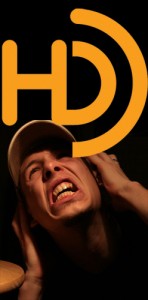On Friday the FCC’s Media Bureau quietly announced that it adopted an order to allow FM stations broadcasting a digital HD signal to increase their power levels up a maximum of 10% of the power of their main analog signal. While the National Association of Broadcasting and iBiquity have been agitating for this change for quite some time, it’s the backing of National Public Radio and its engineering report on the matter that was the likely tipping point.
But, as radio researcher John Anderson points out, this change is also likely to produce more interference complaints from listeners trying to tune in weaker stations adjacent to these higher power digital signals. There have already been significant complaints and concerns about digital HD signals interfering with adjacent analog stations with the previous power limit set at 1% of a station’s analog power.
The Prometheus Radio Project, in particular, questioned NPR’s support for the increase based on NPR’s own engineering data (PDF). Prometheus noted that listeners asked by NPR Labs to rate HD interference to analog signals at the new power levels gave the quality of the resulting audio a score of 2.7 on a 5 point scale, which is below a rating on “fair” on that scale. Prometheus further argued that,
The NPR Labs Study represents a “best case scenario” test of interference to analog. … Although the NPR Labs Study showed troubling levels of interference, the decision to use a single, highly selective receiver dramatically limited the extent to which these results can be extrapolated.
For its part, NPR responded to Prometheus and other critics [PDF], contending that they “generally misapprehend or ignore the [HD] testing methodology, the test results, or the results of NPR Labs’ prior [HD] testing.”
In its order [PDF] the Media Bureau clearly sides with NPR and iBiquity, writing
Based on our analysis of these documents and data, as well as five years of interference-free FM hybrid digital operations by approximately 1500 stations, we are convinced that an immediate voluntary 6 dB increase in FM Digital ERP is appropriate for all FM stations except super-powered FM stations.
Clearly the Media Bureau fails to acknowledge any existing interference problem, nevermind a new threat. Beyond the Commission’s tendency to blow with the prevailing industry winds–especially when the biggest commercial and public radio interests line up together–this blindness may also be explained by the fact that the FCC takes interference complaints from broadcasters far more seriously than those coming from the public. Furthermore, radio engineer Charles Keiler offers up a plausible explanation [PDF] for why the FCC might not be getting a significant number of interference complaints from the public:
Complaints from the public have not accurately reflect the interference that the IBOC signal has caused to first adjacent, to the host companion analog signal, or other broadcast services that the public relies upon. Since the digital components of IBOC sound like noise to a conventional listener, the listener tends to have a problem
distinguishing between IBOC interference and more conventional interference. IBiquity’s own subjective studies have shown that the “noise like” interference can be difficult for a listener to discern as interference.
The FCC’s answer to the interference question comes in a promise to “establish interference remediation procedures” in which the Media Bureau will “resolve each bona fide dispute or impose power reductions within 90 days.” What the Bureau prefers is that stations work out interference complaints cooperatively between themselves, notifying the Commission when an agreement that involves reducing HD power is reached.
If stations can’t resolve an interference complaint, then the analog station experiencing the interference may file a complaint. The station’s complaint “must contain at least six reports of ongoing (rather than transitory) objectionable interference” along with “a map showing the location of the reported
interference and a detailed description of the nature and extent of the interference being experienced at
that location.” Finally, the complaining station must submit a “a complete description of the tests and equipment used to identify the alleged interference.”
Quite obviously, the Media Bureau considers it the onus of the complaining station to show interference and sets a pretty high bar for demonstrating it to the Commission. Listener complaints alone will not qualify as bona fide. Any station experiencing interference will have to make a very hard economic analysis to determine if the expensive testing required will be worth it to resolve interference in particular areas. In effect, this high bar will serve to only bolster the appearance that HD radio does not cause interference because it will be too costly to demonstrate it according to the Media Bureau’s satisfaction, not because listeners aren’t actually experiencing degraded analog radio reception.
Finally, it should be noted that neither low-power FM stations nor translator (repeater) stations will qualify for any sort of interference resolution, since both are considered secondary services by the FCC. Just ingore the irony of the NAB advocating for power increases up to thousands of watts for a potentially interfering sideband signal at the same time that it has lobbied hard against LPFM stations at 10 or 100 watts, arguing that these signals will cause interference to full-power kilowatt stations. In this case, I think the ruling principle is “might makes right.”
At this point it will be up to non-HD stations and affected listeners to band together if they have any hope of seeing digital power increases limited or eliminated. However, this seems pretty unlikely to occur, especially amongst listeners. Given the sorry state of most commercial radio to begin with, listeners are more likely just to abandon radio when their favorite stations becomes degraded from HD interference. This move to improve the reception of HD radio signals might just end up chasing away more casual listeners who just associate poor audio quality (not just poor programming quality) with commercial radio.



